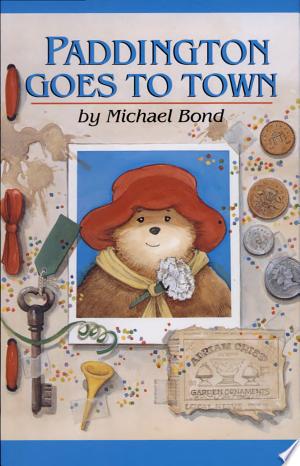Estimated read time: 5 min read
One Sentence Summary
The married Anna Karenina falls in love with Count Vronsky, leading to a tragic and scandalous affair in 19th century Russia.
Table of Contents
Introduction
"Anna Karenina" is a classic novel written by Leo Tolstoy, first published in 1878. Set in the 19th century, the story unfolds in the Russian Empire and explores a multitude of themes, including love, infidelity, society, and the consequences of one's actions. The novel follows the lives of its various characters, offering a profound commentary on the human condition.
Brief Synopsis
Plot Overview
"Anna Karenina" tells the story of several interconnected characters whose lives are deeply affected by love, loss, and societal expectations. The novel is set against the backdrop of the aristocratic society of Imperial Russia, portraying the stark contrast between the opulence of the upper class and the struggles of the working class. The narrative intertwines the lives of its characters, delving into their personal triumphs and tragedies.
Setting
The novel is predominantly set in the high society of St. Petersburg and Moscow, as well as in the rural countryside estates of the Russian aristocracy. The stark differences between the urban and rural settings serve as a backdrop for the characters' experiences and internal conflicts.
Main Characters
Below are the main characters in "Anna Karenina":
| Character | Description |
|---|---|
| Anna Karenina | A charming and elegant woman who becomes embroiled in a scandalous affair that leads to dire consequences. |
| Alexei Karenin | Anna's husband, a government official who represents the traditional values of the Russian aristocracy. |
| Count Vronsky | A dashing and passionate military officer who becomes romantically involved with Anna Karenina. |
| Konstantin Levin | A wealthy landowner who experiences a personal and spiritual journey throughout the novel. |
| Princess Kitty Shcherbatsky | A young woman of noble birth who experiences the complexities of love and societal pressures. |
Story Points Over Chapters
Part 1
In the first part of the novel, the reader is introduced to the characters and their respective social circles. Anna Karenina meets Count Vronsky, leading to a passionate affair that defies societal norms. Meanwhile, Konstantin Levin pursues Princess Kitty Shcherbatsky, but faces rejection.
Part 2
The second part of the novel delves deeper into the complexities of Anna and Vronsky's affair, as well as the consequences it brings. Konstantin Levin grapples with his spiritual and philosophical beliefs, seeking fulfillment in his personal and professional life.
Part 3
As the story progresses, Anna and Vronsky's relationship faces increasing societal scrutiny, leading to turmoil and tragedy. Meanwhile, Konstantin Levin experiences personal growth and finds solace in his relationship with Princess Kitty.
Part 4
The final part of the novel sees the culmination of the characters' story arcs. The consequences of their choices come to fruition, affecting their lives in profound ways. The novel concludes with a reflection on the human condition and the societal constructs that shape individuals' destinies.
Main Events
- Anna and Vronsky's passionate affair sparks scandal and societal condemnation.
- Konstantin Levin's pursuit of personal fulfillment and his struggles with faith and purpose.
- The societal pressures faced by the characters and the consequences of their choices.
- Tragic outcomes and personal growth experienced by the main characters.
Themes and Insights
Themes
- Love and Betrayal: The novel explores the complexities of love and the consequences of betrayal in both personal and societal contexts.
- Society and Morality: Tolstoy delves into the rigid social norms and moral expectations that govern the characters' lives, highlighting the tension between individual desires and societal constraints.
- Existentialism: The characters grapple with existential questions, seeking meaning and purpose in their lives amidst the societal and personal challenges they face.
Insights
Tolstoy provides deep insights into the human psyche, portraying the characters' internal struggles and the impact of their choices on their lives. The novel offers a profound commentary on the human condition, delving into the complexities of relationships, personal fulfillment, and the pursuit of happiness.
Reader's Takeaway
"Anna Karenina" offers readers a compelling exploration of love, society, and the human experience. Through the intertwining lives of its characters, the novel presents a thought-provoking narrative that delves into the depths of human emotion and societal influence. Readers are left with a poignant reflection on the consequences of one's choices and the complexities of the human heart.
Conclusion
In conclusion, "Anna Karenina" remains a timeless masterpiece that continues to captivate readers with its rich tapestry of characters, profound themes, and insightful commentary on the human condition. Leo Tolstoy's masterful storytelling and keen observations make this novel a literary classic that resonates across generations, offering a compelling glimpse into the complexities of love, society, and individual destinies.
Anna Karenina FAQ
What is the main plot of Anna Karenina?
The main plot of Anna Karenina revolves around the tragic love affair between Anna Karenina, a married aristocrat, and Count Vronsky, a wealthy officer. The novel also delves into the lives of other characters, exploring themes of love, betrayal, and societal expectations.
What is the historical context of Anna Karenina?
Anna Karenina is set in 19th-century Russia, during a time of significant social and political change. The novel reflects the tensions between traditional Russian society and the emerging modern era, as well as the impact of these changes on individuals and their relationships.
What are some of the major themes in Anna Karenina?
Some of the major themes in Anna Karenina include love and passion, the conflict between personal desires and societal norms, the search for meaning and fulfillment, and the consequences of one's choices and actions.
Who are the main characters in Anna Karenina?
The main characters in Anna Karenina include Anna Karenina herself, Count Alexei Vronsky, Konstantin Dmitrievich Levin, and Princess Ekaterina "Kitty" Alexandrovna Shcherbatskaya. Each character's storyline intertwines with the others, creating a rich tapestry of interconnected lives.
What is the writing style of Anna Karenina?
Leo Tolstoy's writing style in Anna Karenina is known for its detailed and introspective nature. He masterfully captures the inner thoughts and emotions of his characters, while also providing vivid descriptions of the Russian landscape and society.





